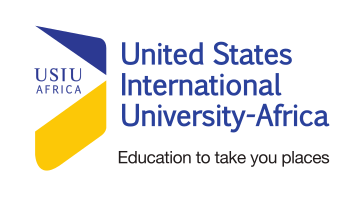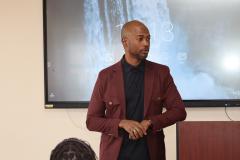The Western Alliance In Disarray And The Political Economy Of Hegemonic Shifts
By
Paul Tiyambe Zeleza - Vice Chancellor USIU-Africa
Over the past two weeks, the world media has been transfixed by two images that would have been unthinkable until recently: an American president at war with his G7 allies and basking in a delirious bromance with a ruthless North Korean dictator. What does one make of these images, of the deluge of daily news about global developments that are so overwhelming that it’s often hard to keep up, let alone understand?
Besides the twittering outbursts and theatrics of the unpredictable President Trump, the great power rivalries within the teetering Western alliance and with a towering China, which seem to be slipping into fierce trade conflicts, world news headlines are dominated by an endless cacophony of catastrophes in various world regions: the endless wars, migration crises, and human rights abuses and atrocities committed by intolerant governments, terrorist organizations, and fundamentalist civil society zealots.
There are of course other powerful stories and forces, slow, subterranean and structural, which are upending the current global order with profound consequences for national, regional, and world political economies. They include the rise of dangerous populisms and the recessions of democracy, the generation of unprecedented wealth and deepening inequalities, the development of planetary consciousness and growth of political tribalisms, and the contradictory trajectories of the digital revolution that is simultaneously unleashing remarkable economic productivity and social connectivity and threatening to overwhelm humanity with the transformative powers of artificial intelligence, robotics, and the internet of things.
I would like to suggest that some of the current global developments that flood the media, especially the growing tensions among and within the major global and regional powers and their respective alliances, can fruitfully be understood in the context of hegemonic shifts and contestations that occur periodically in world history. Hegemony comprises both hard power (military and economic dominance) and soft power (cultural and ideological supremacy). During moments of hegemonic transitions, intra-hegemonic rivalries and struggles between the declining hegemons and rising hegemons tend to intensify, often leading to regional and global wars, both hot and cold.
As a historian, I am only too aware that history doesn’t repeat itself in exact or predictable patterns, but neither is any moment including ours immune from the familiar rhythms of historical change. This is to suggest the need to go beyond the pronouncements or shenanigans of particular leaders, or momentary trends that may seen temporality consequential but end up sinking in the quicksands of history without much trace. Students of world history and the world system have identified various conjunctures in the constructions, contestations, and transitions of regional and global hegemonies going back millennia.
The moments of hegemonic shifts are often triggered or accompanied by economic and structural crises and escalating political and ideological competition and conflict. In the field of economic history, which is my specialty, there are fascinating historical accounts of economic crises going back millennia and some of the hegemonic upheavals they engendered, reflected, and reinforced. A few recent examples will suffice.
In the late 19th century there was the shift in economic and military power in Europe, then the center of the world system, from Britain as the world’s first industrial power to Germany following the latter’s unification in 1871. This shift occurred during, and was exacerbated by, the long global depression of 1873-1896. At the same time, the world drifted towards the New Imperialism, expressed geographically in the colonial conquest of Africa and parts of Asia, and geo-politically in the outbreak of the World War I.
Western Europe emerged from World War I devastated and exhausted, paving the way for the rise of two new hegemonic powers, the United States and the Soviet Union. The two countries’ march to superpower status was accelerated by the Great Depression of 1929-1939 and World War II, notwithstanding the economic hardships the Depression had in the USA, and the trail of destruction left by WWII in the USSR. The decolonization of Africa and Asia occurred in the maelstrom of the new global order and emergence of the Cold War between American-led and Soviet-led geopolitical alliances.
This underscores the fact that moments of hegemonic transitions create both dangers and opportunities for the peripheries. The hegemonic shift of the late 19th century among the European powers brought Africa and Asia the historic disaster of colonization, that of the mid-20th century by the huge subcontinental states of the USA and USSR brought them the momentous promises of decolonization. What will the current reconfiguration in global hegemonies portend for Africa?
At the heart of the current conjuncture is the emergence of a multipolar world, following the demise of the former Soviet Union, and the erosion of USA hegemony as the sole superpower since the early 2000s. It seems almost quaint to recall Fukuyama’s triumphalist thesis on the ‘End of History’—the conceit that the great ideological struggles of history were over vanquished by western liberalism—which was proclaimed in the midst of American euphoria following the collapse of ‘actually existing socialism’. 9/11 and the rise of politicized religious fundamentalisms seriously dented this hollow ideological gloating. The rise of China and other emerging economies that claimed a growing share of the unevenly developed and highly unequal global economy, put more nails in the coffin of American and Western supremacy.
On the day that President Obama was inaugurated in January 2009, I wrote an essay on my blog—The Zeleza Post (closed in 2012)—which was subsequently included in the collection of essays, Barack Obama and African Diasporas (2009) that the challenges facing the new Administration “are immense indeed: ending two foreign wars in Iraq and Afghanistan that have depleted the nation of treasure and trust...; managing the economic crisis and administering an effective stimulus package that will halt the economic recession and restore growth; expanding access to health care and improving the quality of education and overcoming the inequities of the prison industrial complex that have devastated African American and other minority communities; pursuing sound and sustainable domestic and global environmental policies; and promoting smart foreign policies and allegiance to multilateralism. The biggest challenge facing President Obama is how to manage the relative decline of American global supremacy in a world of new and emerging powers…"
The Obama Administration tried to manage this challenge through existing multilateral institutions by roping in the emerging economies, championing such important global causes as climate change by signing the Paris Climate Agreement in April 2016, containing nuclear proliferation by signing, in July 2015, the 5+1 Iran nuclear deal (officially known as the Joint Comprehensive Plan of Action between Iran and the permanent members of the UN + Germany), and trying to contain rising China by creating the Trans-Pacific Partnership that was signed in February 2016.
All this, and other domestic and international policies and achievements of the Obama Administration, have been or are being undone by the Trump Administration. This should not come as a surprise. As I wrote on the day after the 2016 election (posted on this site): “It is no prediction to expect that America's slide into global ignominy will accelerate under Trump's predictably inept leadership and the country’s apparently irreconcilable tribal polarisations…. Obama's legacy will be dismantled by his nemesis…. For the world at large, Trump's looming presidency elicits different fears, perspectives and expectations. There are fears that postwar internationalism will be upended by isolationism…. International trade agreements, the structural face of neoliberal globalization, are under threat from a potentially protectionist administration. The recent global compact on climate change, upon which the very future of humanity and our fragile little planet rests, will face renewed obstacles from one of the world’s greatest polluters. Some predict apocalypse that the Trump presidency will lead to the demise of the West as we have known it. Some even doubt the future of the NATO alliance under President Trump with his 'America First’ doctrine.”
Unfortunately, some of the worst predictions about the Trump presidency have come to pass, whether in terms of undermining domestic institutions and the aura of the presidency itself through wanton corruption, ineptitude, and perverse narcissism, or international institutions and diplomatic niceties through insufferable bluster, bombast, and boorishness. The proverbial stereotype of the ‘Ugly American’ has become a veritable monstrosity in an American leader who despises allies and adores dictators that have historically threatened American interests or self-image.
But the challenges go beyond Trump. He was elected and channels the ideological impulses and interests, however misguided, of his constituents among the electorate and the establishment—the racism, tribalism, chauvinism, xenophobia, jingoism, and protectionism of the ‘America First’ assault on the world. Those wedded to the rules of the crumbling order are deeply alarmed, even apocalyptic. Some hail from the Global South, including Africa. But as one Indian academic noted on Al-Jazeera, the Western order under assault from the Trump Administration was not constructed to benefit the Global South, so its rather rich for the wealthy countries of Western Europe to expect support or solidarity from the emerging economies of the Global South in the intra-hegemonic battles of EuroAmerica.
The Trump Administration’s contempt for America’s allies was on full display at the G7 Summit and the Summit with the North Korean leader, Kim Jong-un. To the indignation of the six leaders of the G7, Trump refused to sign the final agreement, claiming annoyance at the statement by the Canadian Prime Minister that he would not allow his country to be pushed around. The bone of contention in President Trump’s political and economic tantrums has ostensibly been about trade, the misguided belief that the US has been exploited by its major trading partners, and that it can easily win any subsequent trade war.
In reality, at stake is the viability of the post-World War II order that the USA itself created after World War II and has disproportionately benefitted from. It reflects a beleaguered hegemon unable to control the world it had bestrode for seventy years as a superpower and since the demise of the Soviet Union as an undisputed colossus. That world has been vanishing, and as often happens in such moments of declining hegemony, the padded ideological gloves of soft power give way to the bare-knuckled fists of hard power, which only succeeds in accelerating hegemonic decline.
The challenges and ills confronting the world evident in the current intra-hegemonic rivalries and conflicts in the Western Alliance, in the face of rising new hegemons, especially China, are of course not an isolated American phenomenon. Nativism, nationalism, and distrust of the elites, experts, and the establishment have gone global, giving succor, in many countries, to populists, and dictators, and growing preference for strongmen even in many so-called democracies.
Overarching the intra-hegemonic tensions in the Western Alliance is the escalating inter-hegemonic rivalry between the West and China. As the Trump presidency tarnishes the sheen of American democracy, China’s meritocratic model of ‘selection plus election’ for the leadership acquires a new and competing ideological gloss. One Chinese scholar boasts that because of this model, and “despite its many deficiencies, the Chinese polity has delivered the world’s fastest growing economy and has vastly improved the living standards for most Chinese.” The Chinese model of governance and selecting leaders, he continues, “makes it inconceivable that anyone as weak as George W. Bush or Donald Trump could ever come close to the position of the top leadership.”
Some African commentators are attracted to the Chinese model, which recently resulted in the removal of term limits, arguing that Africa can beneficially borrow from some of its elements, such as the fight against corruption, while others regard it with alarm as “an unwelcome gift for African despots who can now point to China as justification for their authoritarian tendencies.”
Of course, the two current dynamics of intra- and inter- hegemonic struggles are only a part of much wider transformations the contemporary world is undergoing. There are other mega trends that reflect and reinforce the hegemonic shifts addressed in this essay. There’s an avalanche of popular and scholarly studies that provide fascinating, although not always accurate or compelling diagnoses and prognoses of the global condition that bring hope to some and fear to others. The trends include some already mentioned, such as the apparent erosion of democracy and rise of populisms, and the growth of global inequalities that feed into the politics of anger and political tribalism. Others not mentioned thus far include the unfolding economic, social, cultural, and political disruptions of technology, and profound demographic changes.
Among the books I’ve particularly enjoyed reading to make sense of our infinitely complex, contradictory, and rapidly changing present, notwithstanding my disagreement with some of their premises, methodologies, or analyses, the following stand out. On the rising recession of democracy, Dambisa Moya, the renowned Zambian economist, gives us her customary trenchant analysis in her recently published book, Edge of Chaos, Why Democracy is Failing to Deliver Economic Growth (2018). Other intriguing reflections on the growing global democratic deficits and the destabilizing effects of populism, political tribalism, and anger include Yascha Mounk, The People Vs. Democracy: How Our Freedom is in Danger and How to Save It (2018), Steven Levitsky and Daniel Ziblatt’s How Democracies Die (2018), the riveting Political Tribes: Group Instinct and the Fate of Nations (2018) by Amy Chou, and the philosophically sophisticated Age of Anger: A History of the Present (2017) by Pankaj Mishra.
On wealth and inequality there’s Thomas Piketty’s brilliant 2013 bestseller, Capital in the Twenty-First Century that spans the past 250 years, while Walter Scheidel’s 2017 tome attempts an even more ambitious treatise, The Great Leveler: Violence and the History of Inequality from the Stone Age to the Twenty-First Century. On the impact of technology and the future of humanity, there are the incisive and provocative reflections by Yvan Noah Harari, Homo Deus: A Brief History of Tomorrow (2017), Rachel Botsman’s Who Can You Trust?: How Technology Brought Us Together and Why It Might Drive Us Apart (2017), Gideon Rose's The Fourth Industrial Revolution: A Davos Reader (2016), and focusing on my own sector, Robert E. Aoun's Robot-Proof, Higher Education in the Era of Artificial Intelligence (2017). As for the changing dynamics of the world population, it is marked by aging of populations in some regions especially the Global North and even China and the youth bulge in others most dramatically Africa. There are also the shifting patterns of global migrations, most graphically captured in the death traps across the Mediterranean.
While demography is not destiny, and the ameliorative powers of technology to rescue aging societies from economic stagnation should not be underestimated, Africa’s demographic explosion could be a developmental and geopolitical asset. The continent is expected to have more than 2 billion people by 2050, 25% of the world population, and over 4 billion in 2100, 40% of the world population. For this boon to materialise massive investments need to be made in the development of the human capital of the youth, as a matter of urgency, now, otherwise the continent’s potential demographic dividend will turn into a demographic disaster as uneducated, unskilled, and unemployed youth terrorise their societies into cesspools of impoverishment, insecurity, and instability.
We live, to use an old cliché, in the best of times and the worst of times. One thing for certain is that massive changes will continue to confront the multiple and intersected worlds of the 21st century, which will be marked, as all historical processes are, by the structures of historical geography and political economy, and the social inscriptions of class, race, ethnicity, gender, and religion.
In this most complex and demanding of times, Pan-Africanism ceases to be an affective good for African countries and peoples and becomes, as its founders and purveyors from W.E. B. Dubois to Kwame Nkrumah to Thabo Mbeki always understood, a historical and geopolitical imperative in an era of shifting global hegemonies. African governments, business, civil society, intergovernmental agencies, think tanks, and academia must mobilise the continent's geopolitical thought leaders to properly decipher the implications of this most challenging of global moments in order to minimise its perils and seize its opportunities.
First Written June 17, 2018.






